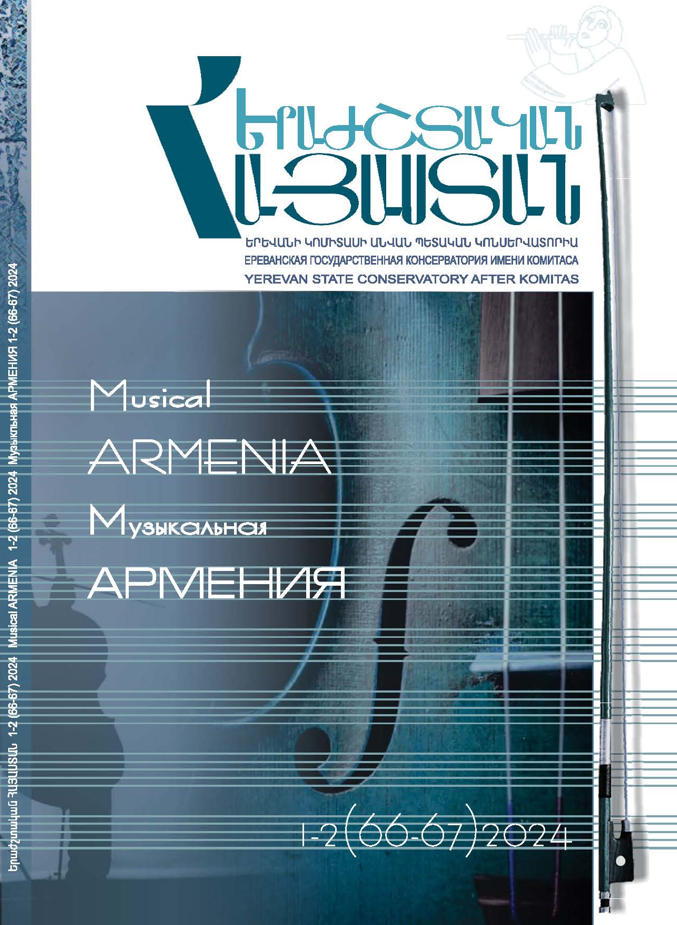AVET TERTERYAN. POINTS OF INTERSECTION
DOI:
https://doi.org/10.58580/18290019-2024.1-2-77%20Keywords:
time, space, avant-garde, poetry, meditation, genesis, national traitsAbstract
The goal of this study is to highlight the creative stance of Avet Terteryan and how researchers perceive his musical messages. A. Terteryan assimilates the Western aesthetics and compositional techniques of the 20th century, demonstrating an interest in sonorous-aleatoric dramaturgy, an inclination toward minimalism, linear polyphony, cluster layering, and more. His originalthinking, rejection of genre conventions, and prioritization of unconventional solutions, the concept of music in the universeexpanded the boundaries of understanding time and space, uniting the spirit and intellect of the East and West. In his publication, H. E. Gedeke reflects on the synthesis of Eastern and Western elements in the composer's work. For the first time, Terteryan successfully in combined the logic of modern thought with the poetry of antiquity. The temporal tilayering in his symphonies is achieved through the dramatic collision of "epochs". L. Ptushko, analyzing the key characteristics of the composer's symphonic style, primarily draws parallels with poetry, followed by architecture, painting, and theater, offering a deeper understanding of the national traits within his style. G. Rohde writes about the sound and technical intersections in the composer's work. M. Aranovsky's concept confirms the composer's engagement with avant-garde aesthetics. Terteryan's symphonies express the inner world and the soul of the modern individual; at the same time, they serve as a musical parable about eternity. His work is a form of meditation, crafted within a unique sound space and temporal dimension.
Downloads
Published
How to Cite
Issue
Section
License

This work is licensed under a Creative Commons Attribution-NonCommercial 4.0 International License.



